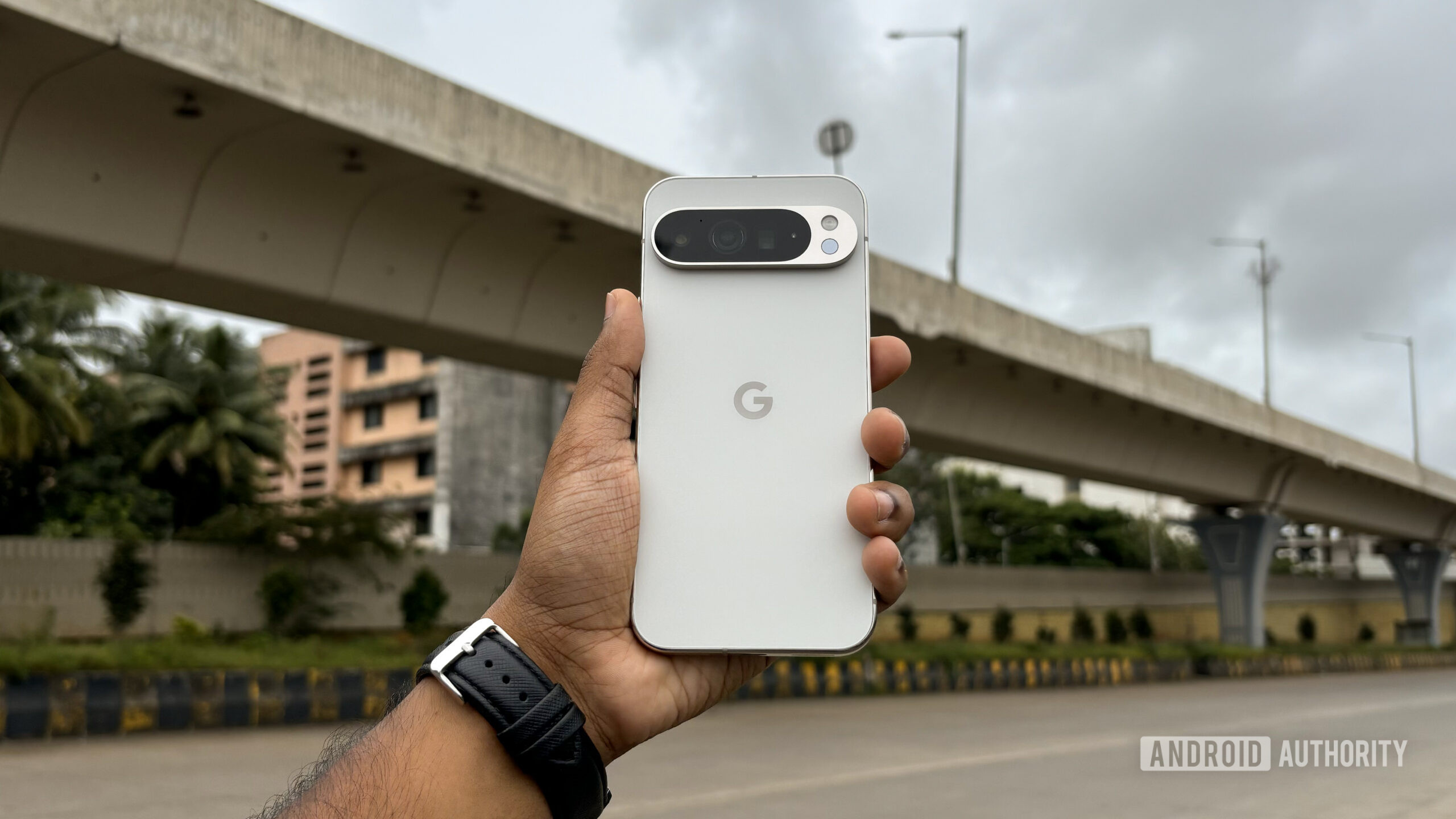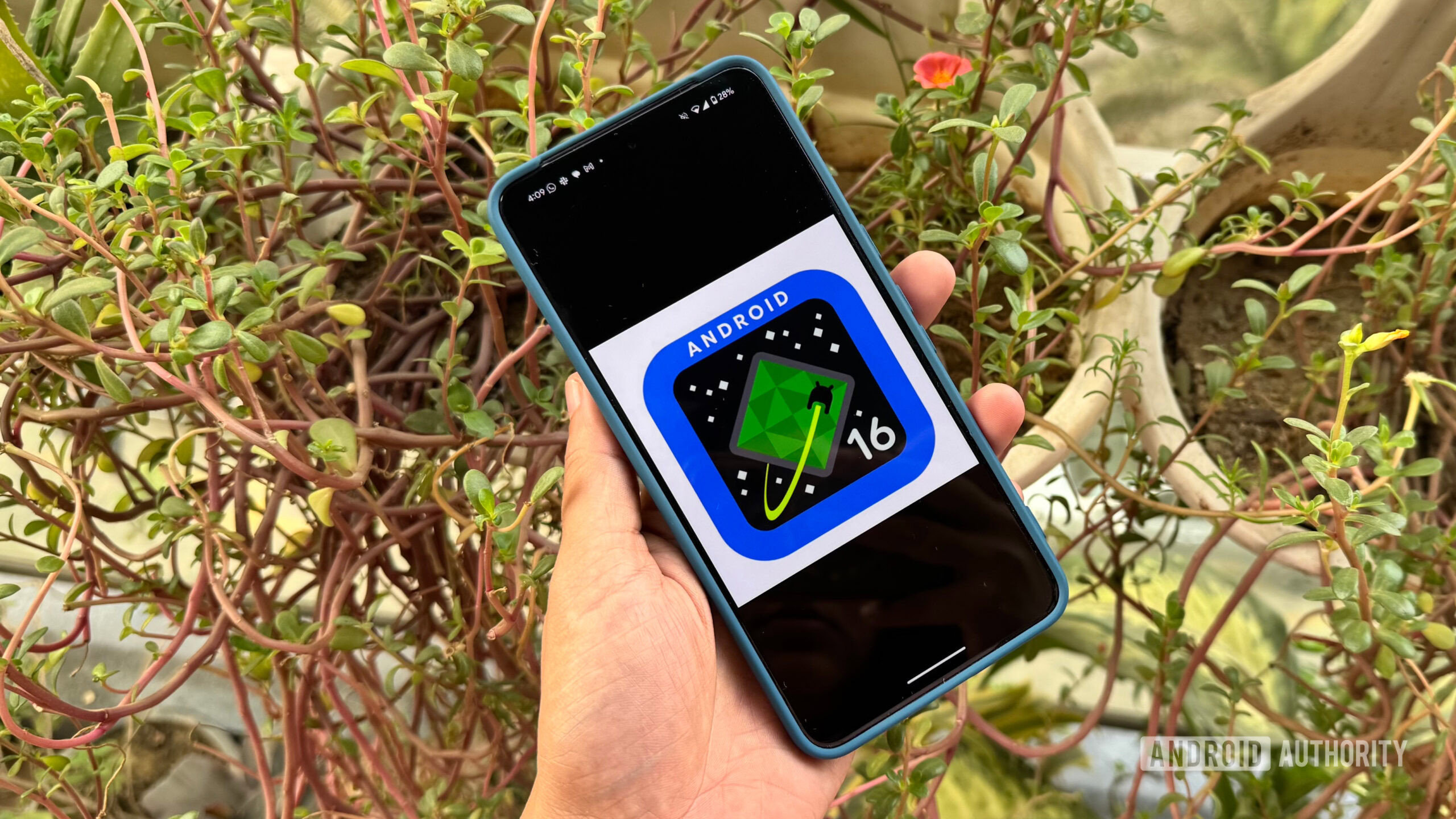Affiliate links on Android Authority may earn us a commission. Learn more.
How to install Android 16 Beta 3 on your Pixel phone right now
Published onMarch 13, 2025
Way ahead of everyone’s (old) expectations, Android 16 is already here in beta, ready for you to start testing! Google’s first Developer Preview arrived just one short month after Pixel phones first got their Android 15 release, and by December we were already getting our update to DP2. We moved on to Android 16 Beta 1 in January, Beta 2 in February, and now it’s time for Google’s next update. If you’re itching to get in on this bleeding-edge action, in this guide we take a look at how to install Android 16 Beta 3 on your Pixel phone.
What devices can install Android 16 Beta 3 today?

Android 16 may be nearing the end of its testing phase, but for now you can still only get it on Pixel devices. Here’s a full list of Pixel hardware that can install Android 16:
- Google Pixel 9 Pro Fold
- Google Pixel 9 Pro XL
- Google Pixel 9 Pro
- Google Pixel 9
- Google Pixel 8 Pro
- Google Pixel 8
- Google Pixel 8a
- Google Pixel Fold
- Google Pixel Tablet
- Google Pixel 7a
- Google Pixel 7 Pro
- Google Pixel 7
- Google Pixel 6a
- Google Pixel 6 Pro
- Google Pixel 6
If you don’t see your Pixel on that list, you’re stuck on Android 15 (or earlier) indefinitely. While other brands will get into Android 16 testing eventually, that won’t happen until we’re a little further into 2025.
How do I install Android 16 Beta 3?

Prepare to install Android 16 Beta 3
If you’re already on Android 16 Beta 2, this is going to be as easy as can be: You don’t really need to do anything at all. Pixel phones running Beta 2 will get a notification when Beta 3 is ready to install via an OTA update. Then you just tap to install like you would with any new system release.
If this is your first time getting into Android 16, however, you’ll need the following materials and prerequisites to get started:
- A Windows, macOS, Chrome OS, or Linux computer with access to the internet and the latest Chrome browser.
- A short, thick USB cable for connecting your phone to the computer. The original USB cable that came with the phone is best for this.
Before you move on to the next steps, double-check that you have everything you need. You don’t want to get into the process of installing Android 16 and discover you aren’t fully prepared! Once you’re ready, continue on by using either the assisted or manual installation methods below.
Install Android 16 Beta 3 using the assisted method
FINAL WARNING: This process will unlock your bootloader and completely erase all your phone’s data.
- Ensure your computer has the proper drivers for your phone, which you can grab from Google’s Pixel drivers page. This is an essential step — if you skip this, flashing will not work!
- Plug your phone into your computer using the USB cable.
- In your phone’s Settings, go to System > Developer options. If you don’t see Developer options, go to Settings > About phone and scroll all the way down to the Build number. Tap on the Build number seven times until your phone says you are a developer. Developer options should be available now.
- In Developer options, enable OEM unlocking and USB debugging.
- Visit the Android Flash Tool page for installing Android 16 Beta 3.
- Select the version of Android 16 you’d like to install. For some models, there’s a 64-bit-only version and a version that also supports 32-bit software. Either one works. If you don’t know which one to pick, choose the one that just says “(signed),” which supports both 64-bit and 32-bit software.
- Follow along as the flashing tool takes care of everything for you. Simply follow the instructions and remember not to touch your phone unless specifically instructed to do so by the flashing tool.
That’s it! You should now have Android 16 Beta 3 installed on your Pixel smartphone.
Install Android 16 Beta 3 using the manual method
Primarily, there are two manual methods:
- Flashing Factory Images through Fastboot: This requires an unlocked bootloader but is the recommended path for upgrading. Unlocking the bootloader will completely wipe your device. The Fastboot installation will wipe your device again, but you can alter this behavior.
- Sideloading OTA packages through ADB and Recovery: This method is useful for Pixel devices with a locked bootloader and for users who want to preserve data.
Irrespective of the method you choose, there are some common steps that you need to get in place:
- Install ADB on your computer by following our guide. The process also installs Fastboot on your computer, as Fastboot is part of the Android SDK Platform Tools alongside ADB.
- Ensure that you have USB Debugging enabled on your smartphone:
- On your smartphone, go to Settings > About Phone.
- Locate the Build Number entry. Tap seven times on it. You will see a toast popup saying, “You are now a developer” or “No need, you are already a developer.” This means that Developer Options has been unlocked on your device, and you will see a new entry in your Settings menu.
- Now navigate to Settings > Developer Options > Enable USB Debugging. Confirm your selection when prompted in the warning.
- Ensure your computer has the proper drivers for your phone, which you can grab from Google’s Pixel drivers page.
- Connect your phone to the computer. Presuming this is the first time you are connecting your phone to your computer, you will get a prompt on your phone requesting authorization for the connection. Grant it.
With this, you will have your common steps in place. You can now move forward with the rest of the tutorial, depending on the install path that you choose.
Flashing Factory Images through Fastboot
FINAL WARNING: As part of this process, your phone will be completely wiped. Please ensure you have taken adequate backups before proceeding.
- Download the official Factory Images on your computer for your phone. Ensure you download the file for your specific phone only, as flashing the file intended for a different phone model may mess with the installation process and render your device useless.
- Optional but recommended: Verify the SHA-256 checksum of the file you have downloaded. This reassures you that the file has been downloaded completely and correctly. Google mentions the SHA-256 checksum next to the download link.
- Unzip the file to a convenient location. For ease of installation, you can copy the contents to the directory where ADB and Fastboot are located on your computer.
- Connect your phone to your computer.
- Open up a command prompt on your computer and run the command
adb reboot bootloader. This will reboot your phone to Fastboot mode. - Unlock the bootloader of your phone: You do this by running the Fastboot command
fastboot flashing unlock. Note that this will erase all data on the device.- If your device reboots into the OS after a data wipe, you will need to skip all the setup steps and enable USB Debugging again. Once you do, reboot back into the Fastboot mode.
- On a Windows PC, double-click on the flash-all.bat file. This will run the batch installation file and execute all the necessary commands by itself. On a Mac/Linux PC, you will need to run
flash-all.- In case you want to preserve your system and app data between installations, you will need to open the flash-all script in a text editor program and delete the “-w” attribute from the command. This attribute denotes a wipe, so remove it if you do not want a wipe.
- Once the script finishes, your device will reboot into the new OS.
- Optional but recommended: Relock the bootloader of your phone by rebooting your phone into Fastboot mode and running the command
fastboot flashing lock.
Sideloading OTA packages through ADB
FINAL WARNING: This process should only be used if you’re already on an Android 16 DP and are trying to recover from a failed update. If you are on any other version, use the assisted method or Fastboot.
- Download the official OTA update zip file on your computer for your phone. Ensure you download the file for your specific phone only, as flashing the file intended for a different phone model may mess with the installation process and render your device useless.
- Optional but recommended: Once the file has finished downloading, rename it to a simpler name, like abc.zip, for example. This will save you from typing out the long name that the file initially downloaded with.
- Optional but recommended: Verify the SHA-256 checksum of the file you have downloaded. This reassures you that the file has been downloaded completely and correctly. Google mentions the SHA-256 checksum next to the download link.
- Place the file in the directory where ADB is located on your computer.
- Connect your phone to your computer.
- Open up a command prompt on your computer and run the command
adb reboot recovery. This will reboot your phone to recovery mode.- In case your phone does not reboot into recovery, you can also manually reboot into recovery by shutting down your device and then pressing and holding the power button and volume up button.
- Use the volume keys to navigate to the Apply Update from ADB option in the Recovery menu. Press the power button to select it.
- On the command prompt on your computer, run the command
adb devices. This will return a device serial number with “sideload” written next to it. This indicates that your phone is connected in sideload mode and is ready to receive further installation commands. - On the command prompt on your computer, run the command
adb sideload abc.zip. You will need to replace “abc.zip” with the filename that you have chosen. - ADB will install the update zip file on your phone.
- Once installation is complete, choose the Reboot system now option on your phone, and your device will reboot into the freshly installed Android 15 build.
That’s it! You should now have Android 16 Beta 3 installed on your Pixel smartphone.
FAQ
Google is targeting a stable Android 16 release for sometime after April 2025.
Historically, Pixel phones have gotten updates nearly as soon as the new release hit stable, but with Android 15 we witnessed a month-long delay. It’s still unclear if Google will follow a similar pattern with Android 16.
No. Certain manufacturers will eventually have their own beta programs open to some phones. But right now, only Pixel devices are able to participate in testing.